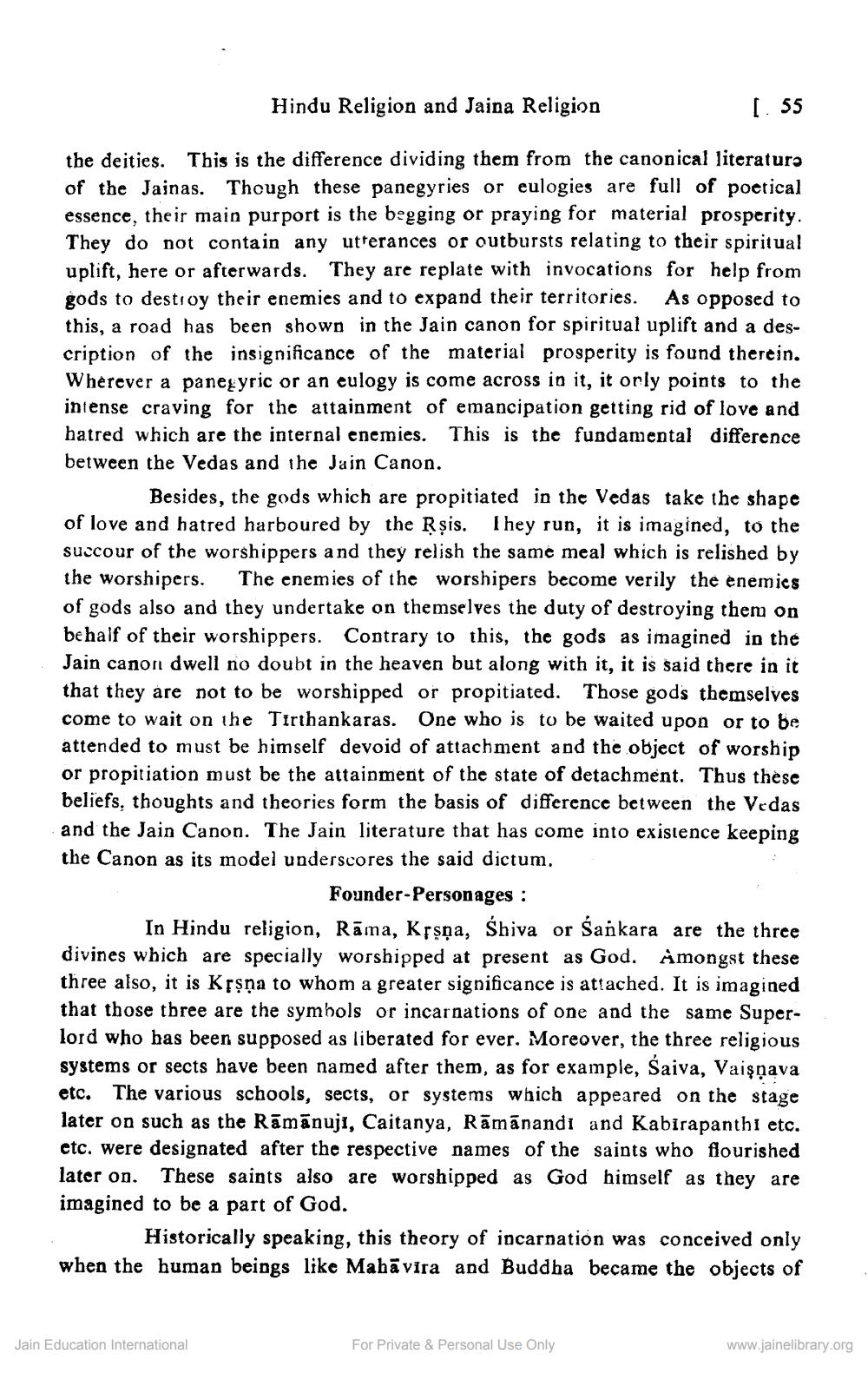________________
Hindu Religion and Jaina Religion
155
the deities. This is the difference dividing them from the canonical literatura of the Jainas. Though these panegyries or eulogies are full of poetical essence, their main purport is the begging or praying for material prosperity. They do not contain any utterances or outbursts relating to their spiritual uplift, here or afterwards. They are replate with invocations for help from gods to destroy their enemies and to expand their territories. As opposed to this, a road has been shown in the Jain canon for spiritual uplift and a description of the insignificance of the material prosperity is found therein. Wherever a panegyric or an eulogy is come across in it, it orly points to the intense craving for the attainment of emancipation getting rid of love and hatred which are the internal enemies. This is the fundamental difference between the Vedas and the Jain Canon.
Besides, the gods which are propitiated in the Vedas take the shape of love and hatred harboured by the Rșis. They run, it is imagined, to the succour of the worshippers and they relish the same meal which is relished by the worshipers. The enemies of the worshipers become verily the enemics of gods also and they undertake on themselves the duty of destroying them on behalf of their worshippers. Contrary to this, the gods as imagined in the Jain canon dwell no doubt in the heaven but along with it, it is said there in it that they are not to be worshipped or propitiated. Those gods themselves come to wait on the Tirthankaras. One who is to be waited upon or to be attended to must be himself devoid of attachment and the object of worship or propitiation must be the attainment of the state of detachment. Thus these beliefs, thoughts and theories form the basis of difference between the Vedas and the Jain Canon. The Jain literature that has come into existence keeping the Canon as its model underscores the said dictum.
Founder-Personages : In Hindu religion, Rāma, Krşņa, Śhiva or Sankara are the three divines which are specially worshipped at present as God. Amongst these three also, it is Kļşņa to whom a greater significance is attached. It is imagined that those three are the symbols or incarnations of one and the same Superlord who has been supposed as liberated for ever. Moreover, the three religious systems or sects have been named after them, as for example, Saiva, Vaişņava etc. The various schools, sects, or systems which appeared on the stage later on such as the Rāmānuji, Caitanya, Rāmānandi and Kabirapanthi etc. etc. were designated after the respective names of the saints who flourished later on. These saints also are worshipped as God himself as they are imagined to be a part of God.
Historically speaking, this theory of incarnation was conceived only when the human beings like Mahā vira and Buddha became the objects of
Jain Education International
For Private & Personal Use Only
www.jainelibrary.org




